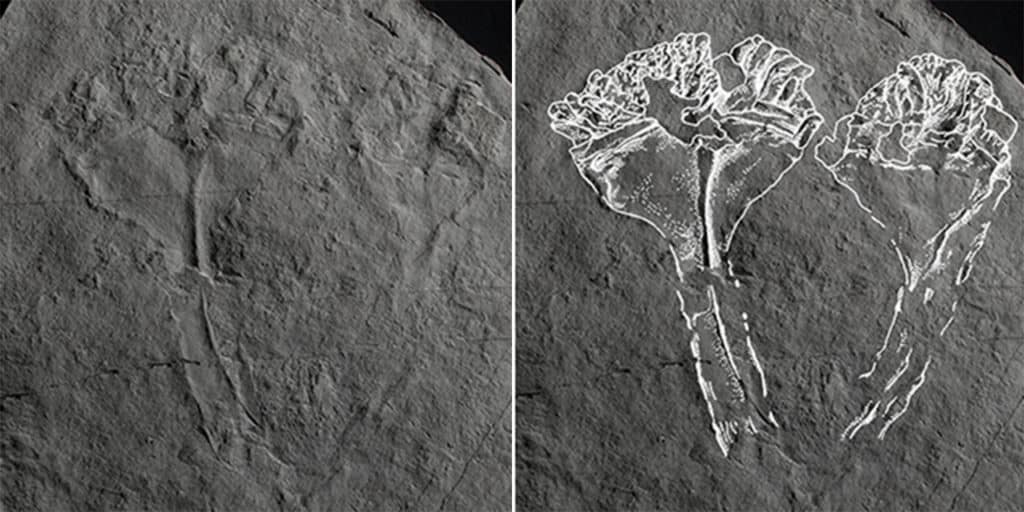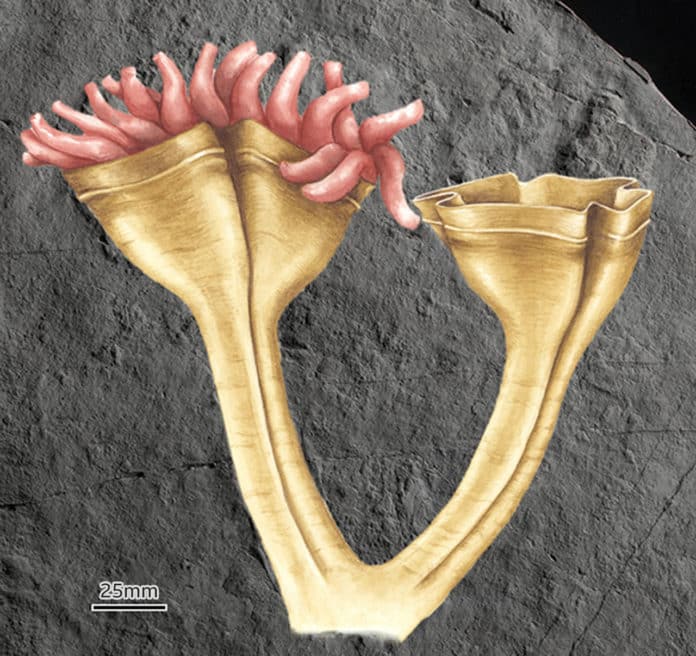Geologists have discovered fossil of around 560-million-year-old specimens. The fossil is believed to be the earliest known animal predator. It has been named ‘Auroralumina attenboroughii ‘in honor of Sir David Attenborough. The first part of its name is Latin for ‘dawn lantern,’ in recognition of its great age and resemblance to a burning torch.
Geologists discovered the fossil near Leicester in England, which is famous for its fossils. It is the first of its kind, but it is related to the group that includes corals, jellyfish, and anemones living on the planet today.
Sir David Attenborough said, “When I was at school in Leicester, I was an ardent fossil hunter. The rocks in which Auroralumina has now been discovered were considered so ancient that they dated from long before life began on the planet. So I never looked for fossils there.”
“A few years later, a boy from my school found one and proved the experts wrong. He was rewarded by his name being given to his discovery. Now I have — almost — caught up with him, and I am truly delighted.”
The study raises the question of when modern groups of animals appeared on Earth.
Dr. Phil Wilby, BGS Palaeontology Lead, said, “It’s generally held that modern animal groups like jellyfish appeared 540 million years ago, in the Cambrian Explosion, but this predator predates that by 20 million years.”
“It’s the earliest creature we know of to have a skeleton. So far, we’ve only found one, but it’s massively exciting to know there must be others, holding the key to when complex life began on Earth.”

Even today, paleontologists visit the forest to study fossils from the Ediacaran Period, which range in age from 635 to 538.8 million years old. In 2007, Phil Wilby and other BGS employees cleaned a 100 m2 rock surface with pressure jets and toothbrushes for more than a week. Over a thousand fossils were imprinted on the entire surface using a rubber mould, but just one stood out.
Dr. Frankie Dunn, Oxford University Museum of Natural History, said, “This is very different to the other fossils in Charnwood Forest and around the world.”
“Most other fossils from this time have extinct body plans, and it’s unclear how they relate to living animals. This one has a skeleton with densely packed tentacles that would have waved around in the water, capturing passing food, much like corals and sea anemones do today. It’s nothing like anything else we’ve found in the fossil record at the time.”
According to Dunn, the specimen is a ‘lonely little fossil’ and originated from shallower water than the rest of the fossils found in Charnwood.
“The ancient rocks in Charnwood closely resemble ones deposited in the deep ocean on the flanks of volcanic islands, much like at the base of Montserrat in the Caribbean today.”
“All the fossils on the cleaned rock surface were anchored to the sea floor and knocked over in the same direction by a deluge of volcanic ash sweeping down the submerged foot of the volcano, except one: A. attenboroughii.”
“It lies at an odd angle and has lost its base, so appears to have been swept down the slope in the deluge.”
“The ‘Cambrian Explosion’ was remarkable. It’s the time when the anatomy of living animal groups was fixed for the next half a billion years.”
“Our discovery shows that the body plan of the cnidarians [corals; jellyfish; sea anemones, etc.] was fixed at least 20 million years before this, so it’s hugely exciting and raises many more questions.”
Journal Reference:
- Dunn, F.S., Kenchington, C.G., Parry, L.A. et al. A crown-group cnidarian from the Ediacaran of Charnwood Forest, UK. Nat Ecol Evol (2022). DOI: 10.1038/s41559-022-01807-x
